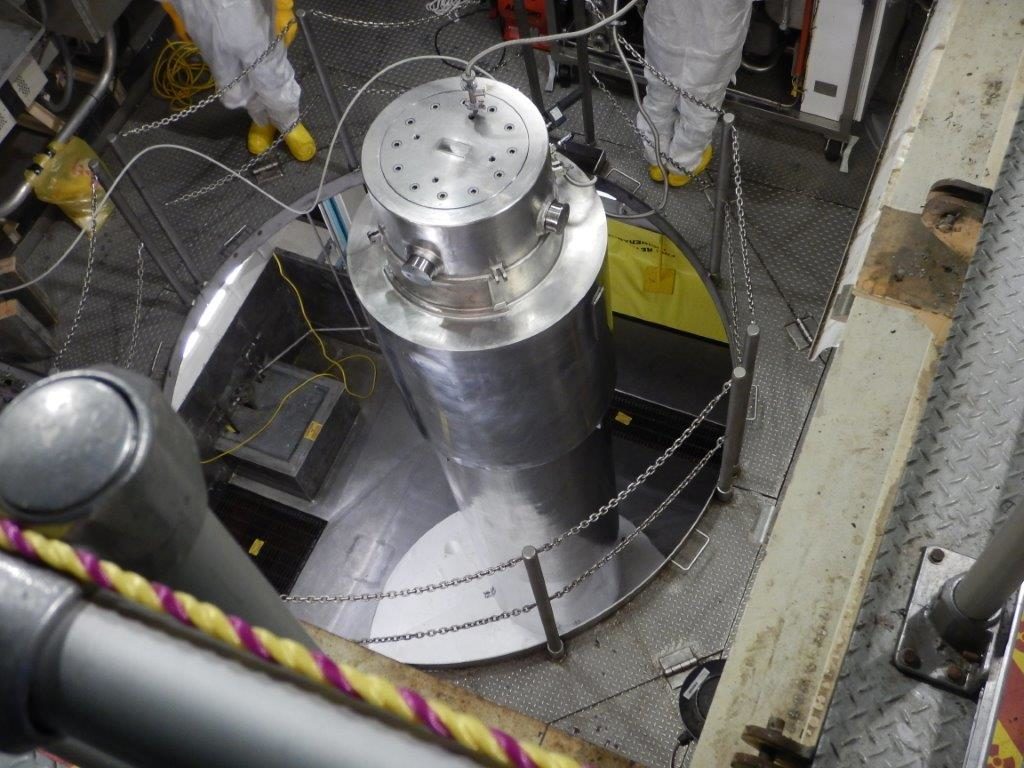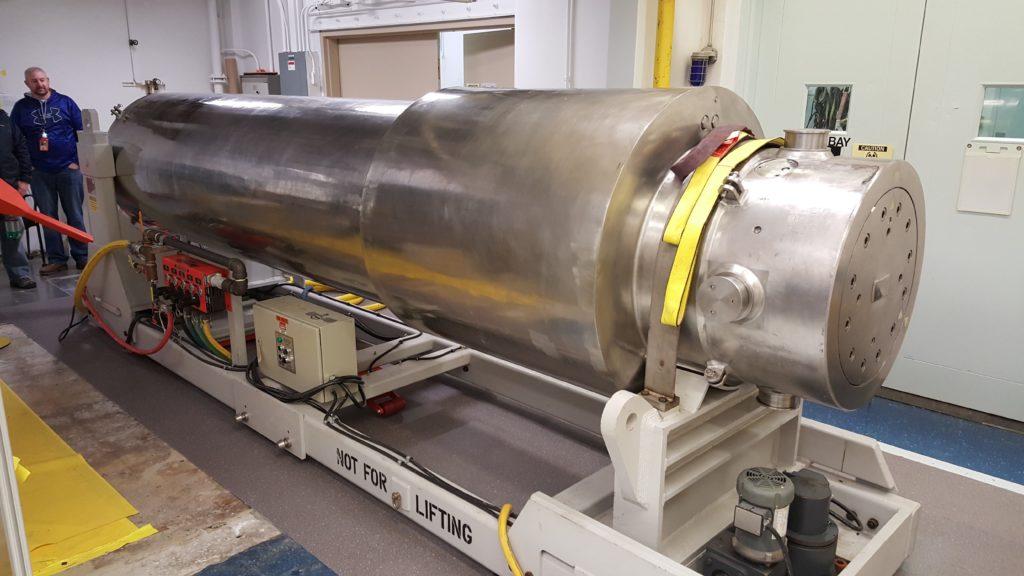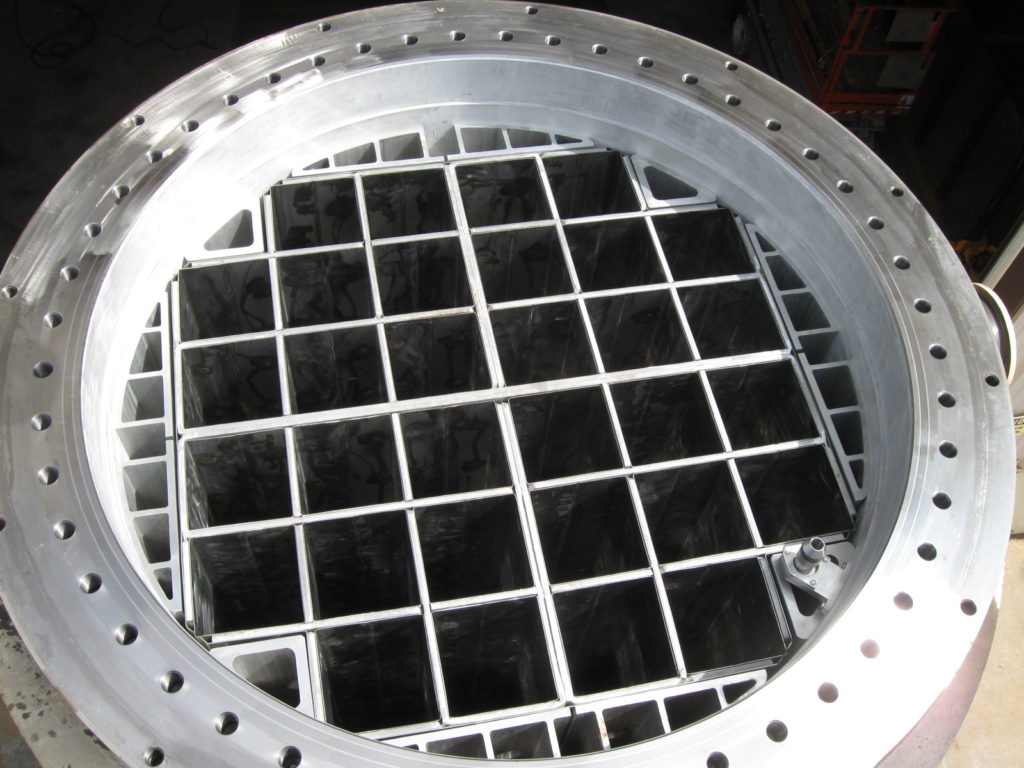Ten-Year Demonstration to Begin in 2017
Storage of spent nuclear fuel in dry casks is widely considered low risk, based on decades of research and testing by EPRI and nuclear industry stakeholders. After three years of successful preparatory work, an EPRI-led demonstration to confirm the current understanding of extended spent-fuel storage is on track to begin next year.
Nearly all spent fuel pools at U.S. nuclear plants are approaching their capacity. Since 1986, dry casks—which can enable storage for decades if aging effects are properly managed—have been used to expand that capacity. As the nuclear industry generates more high-burnup spent fuel to improve reactor economics, more data is needed to support the fuel’s long-term storage in casks. A rigorous cask demonstration is especially important given the recent cancellation of the permanent spent fuel repository at Yucca Mountain.
As part of a joint project between EPRI and the U.S. Department of Energy (DOE) launched in 2013, nuclear power researchers, scientists, operators, and technology vendors are creating a specially equipped commercial dry storage cask for high-burnup spent fuel. By 2017, the cask will be ready for a 10-year demonstration to study the behavior of the high-burnup spent fuel stored inside.
Lessons and data from the project will inform low-risk storage of spent fuel and the U.S. Nuclear Regulatory Commission’s (NRC) licensing process for fuel storage. Project participants include utility Dominion Virginia Power; technology vendors AREVA, Westinghouse, and NAC International; and six DOE national laboratories.
Cask Design Completed, Sensors Installed
In 2016, researchers completed preparatory work critical for monitoring the cask, which in 2017 will be loaded with several types of high-burnup fuel using standard industry practice and then moved to the concrete pad at Dominion’s North Anna nuclear plant in Virginia for storage.
“We completed the cask design document required for Dominion’s storage licensing request to the NRC, and AREVA and Westinghouse extracted ‘sister’ rods from high-burnup assemblies at North Anna and shipped them to Oak Ridge National Laboratory,” said EPRI Project Manager Keith Waldrop.
These sister fuel rods, currently stored at Oak Ridge, are similar to those that will be loaded inside the cask. Researchers will compare their physical state following about a decade of storage.
During the demonstration, researchers will measure internal temperature at different points in the cask using seven thermocouple lances equipped with multiple probes. The team will collect gas samples from the cask periodically for laboratory analysis. After the cask is completed later this year, it will be shipped to North Anna in February 2017 for loading in July, pending NRC’s approval.
Improving Safety and Licensing
Research data will be used to support high-burnup license applications and renewals. For instance, Xcel Energy will use project data to fulfill aging management conditions in its recently renewed license to store high-burnup spent fuel at its Prairie Island Nuclear Generating Station in Minnesota.
“We are all collaborating so that the public is confident that we can store high-burnup fuels in dry storage systems until a federal solution becomes available,” said Terry Pickens, Director of Nuclear Regulatory Policy at Xcel Energy, who leads the project’s industry review team. “Federal solutions could include relocating spent fuel to a consolidated interim storage site or permanent disposal in a deep geologic repository at Yucca Mountain or another acceptable site.”
Researchers plan to evaluate the results of cask monitoring from 2017 to 2027 and ship the cask to an undetermined facility in 2027 for post-storage testing.
EPRI Technical Expert:
Keith Waldrop








